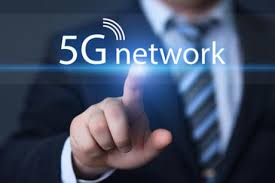
Breaking News
 Why Americans Love Individualism But Hollywood Fights It
Why Americans Love Individualism But Hollywood Fights It
 Ex-CIA: "They don't want you to know the US Dollar is COLLAPSING"
Ex-CIA: "They don't want you to know the US Dollar is COLLAPSING"
 Microsoft's AI Coworker Will Get You Fired in 2026 – Here's Why
Microsoft's AI Coworker Will Get You Fired in 2026 – Here's Why
 [Off Grid Build] DIY Rotary Sieve (Trommel) For Separating Stone from Earth (Making Gravel)
[Off Grid Build] DIY Rotary Sieve (Trommel) For Separating Stone from Earth (Making Gravel)
Top Tech News
 Kawasaki's four-legged robot-horse vehicle is going into production
Kawasaki's four-legged robot-horse vehicle is going into production
 The First Production All-Solid-State Battery Is Here, And It Promises 5-Minute Charging
The First Production All-Solid-State Battery Is Here, And It Promises 5-Minute Charging
 See inside the tech-topia cities billionaires are betting big on developing...
See inside the tech-topia cities billionaires are betting big on developing...
 Storage doesn't get much cheaper than this
Storage doesn't get much cheaper than this
 Laser weapons go mobile on US Army small vehicles
Laser weapons go mobile on US Army small vehicles
 EngineAI T800: Born to Disrupt! #EngineAI #robotics #newtechnology #newproduct
EngineAI T800: Born to Disrupt! #EngineAI #robotics #newtechnology #newproduct
 This Silicon Anode Breakthrough Could Mark A Turning Point For EV Batteries [Update]
This Silicon Anode Breakthrough Could Mark A Turning Point For EV Batteries [Update]
 Travel gadget promises to dry and iron your clothes – totally hands-free
Travel gadget promises to dry and iron your clothes – totally hands-free
 Perfect Aircrete, Kitchen Ingredients.
Perfect Aircrete, Kitchen Ingredients.
 Futuristic pixel-raising display lets you feel what's onscreen
Futuristic pixel-raising display lets you feel what's onscreen
5G technology is being tested outdoors as it moves toward deployment in early 2020s

5G should be 10 to 20 times faster than today's cell-phone networks. 5G will operate in a high-frequency portion of the radio spectrum, known as millimeter wave. It has a lot of available bandwidth and should make it possible for wireless devices to process data with minimal delays. But since its wavelengths are much shorter, it is more easily obstructed. And because it has never been used for consumer mobile services, carriers are still learning how 5G signals will behave in different types of terrain and weather. "We need to look at how the signals are affected by things like snow, rain, sleet, hail, maple trees, oak trees, and spruce trees, because each of those will be different," says AT&T research engineer Bob Bennett.
The problem: most 5G measurement equipment is so expensive, fragile, and bulky that it can be deployed outdoors for only a few hours at a time. Bennett and colleagues say that far more real-world data is needed to properly develop the technology, so they have created weatherproof radios the size of toaster ovens and installed them across AT and T's 260-acre campus in Middletown, New Jersey, which was once part of Bell Labs.
Since deploying the radios last September, the engineers have seen how tree leaves, heavy rain, and truck traffic all obstruct millimeter-wave signals to some extent. AT and T plans to share the information with the rest of the telecom industry to aid in the design of 5G technical specifications, base stations, modems, smartphone chips, and more. The new technology won't be commercially widespread until after 2020, but these small, homemade radios are a crucial step toward making it real.



